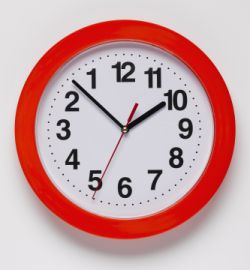 Flicking through the careers page of The Guardian last weekend, I stumbled across an ad for a job with a company called Evitavonni.
Flicking through the careers page of The Guardian last weekend, I stumbled across an ad for a job with a company called Evitavonni.
“Hmmm,” I thought, “I’ve not heard of them before.” The name made me think that perhaps they were Italian, or maybe founded by someone called Evita. The look of the ad suggested some kind of design company.
Read it backwards
However, after studying the name a bit more, it hit me. Have you spotted it yet? The company is “innovative”, spelt backwards. Evitavonni. Innovative.
I’d love to know what process the company went through before coming up with that particular name. Because I’m struggling to see how backwards innovation can be a good thing.
A new trend in naming?
To me, writing a word backwards implies the opposite meaning. So by that token, Evitavonni suggests a business that’s old-fashioned, change-resistant and set it its ways. Doesn’t it?
Thing is, I don’t think they are. You certainly wouldn’t expect an uninnovative company to sell striking products like this expensive outdoor fireplace.
So, what gives? Why pick that particular name? Is backwards spelling a new trend in branding that’s yet to take off? (I can’t think of a single other company named in a similar way, though I’m happy to be corrected.)
Honestly, I’m stumped. But I do think if you’re going to pick a word and spell it backwards, you should at least choose one which will create a positive impression of your company.
Update: Since posting this, I’ve discovered there’s a good list of backwards brand names over at Fritinancy. I found it most interesting to learn that Trebor is the reverse of the company’s founder’s first name. Seems it’s not as uncommon as I thought.
 There are lots of important decisions to be made when going freelance. Like what sort of office chair to buy. And what to put on your business cards.
There are lots of important decisions to be made when going freelance. Like what sort of office chair to buy. And what to put on your business cards.
One of the trickier ones is working out how to position yourself. Do you want to be totally upfront that it’s just you on your own, or would you rather project the air of a slightly larger business?
At its simplest, this comes down to whether you talk about “me” or “we”.
So, for instance if you’ve decided to go down the route of personal branding – you are the business and you’re happy to admit it – you’d probably trade under your own name and have an “about me” page on your website.
Alternatively, if you’ve decided you want to be a little more vague about the people working in your business, you’ll have to think up a name for the company and call the equivalent page on your website “about us”.
Neither of these is the right or wrong approach. Plenty of people take the “me” route and lots go down the “we” road – I haven’t noticed either approach resulting in noticeably more successful businesses. So in some respects, it doesn’t really matter which you choose.
But in others, it does. And if you’re starting out, it’s worth taking a bit of time working out which is right for you. It makes those other important decisions – like what to put on your business cards and website – a whole lot easier.
As you’ll have noticed, I picked the “me” option. This is why:
- I don’t have any intention of employing people. I’ve consciously decided I don’t want to bring more people into the business. Should I reach the stage where there’s more work than I can handle, I’ll look to other (carefully chosen) freelancers.
- I’ve decided to sell my skills and experience. On this site and when I talk to prospective clients, I try to explain what it is that I can offer them. It’s about how my particular experience and abilities are useful to them – and that means I have to talk about me.
- I want clients who I like and who like me. While I can maintain a good working relationship just about anyone, the clients I get a real buzz out of working with are the ones I get on with best. It’s easier to build this sort of partnership when I’m open about who I am from the start.
- My name was already out there. I’ve been working in this business for a while and have had a blog or website for several years. That gave me the beginnings of a profile – online and offline. Why waste that by starting from scratch under another name?
- I wanted to be completely honest with potential clients. The thing about being a one-person “we” is that you have to explain it’s just you at some point. That’s not to say this is a difficult thing to do – I just feel more comfortable not having to bother doing it at all.
There are some downsides, of course:
(more…)
 What’s with the rash of everyday things being renamed in complicated ways?
What’s with the rash of everyday things being renamed in complicated ways?
First up is Pizza Hut. For years, this chain has been synonymous with pizza, salad bars and, if you’re a kid, their ice cream factory, which lets you keep returning to eat more ice-cream until you’re actually sick.
But what’s this? They don’t seem to have a salad bar anymore. For 2009, they appear to have renamed it the Salad Station. As their website explains:
“Grab a bowl & help yourself. Check out our all-new Salad Station, and get creative with new ingredients, dressings, drizzles and toppings.”
Umm, sounds a little bit like a good old salad bar to me. So what’s with the name change?
Ready what?
Next is that rather well-known US chain of coffee shops: Starbucks. As you might have seen, they recently launched a brand of instant coffee called VIA.
No, I don’t know why they’ve capitalised the name. And I also don’t know why they’ve decided to call it ‘ready brew’ instead of instant coffee.
(more…)
 Flicking through the careers page of The Guardian last weekend, I stumbled across an ad for a job with a company called Evitavonni.
Flicking through the careers page of The Guardian last weekend, I stumbled across an ad for a job with a company called Evitavonni.
 There are lots of important decisions to be made when going freelance. Like what sort of office chair to buy. And what to put on your business cards.
There are lots of important decisions to be made when going freelance. Like what sort of office chair to buy. And what to put on your business cards. What’s with the rash of everyday things being renamed in complicated ways?
What’s with the rash of everyday things being renamed in complicated ways?